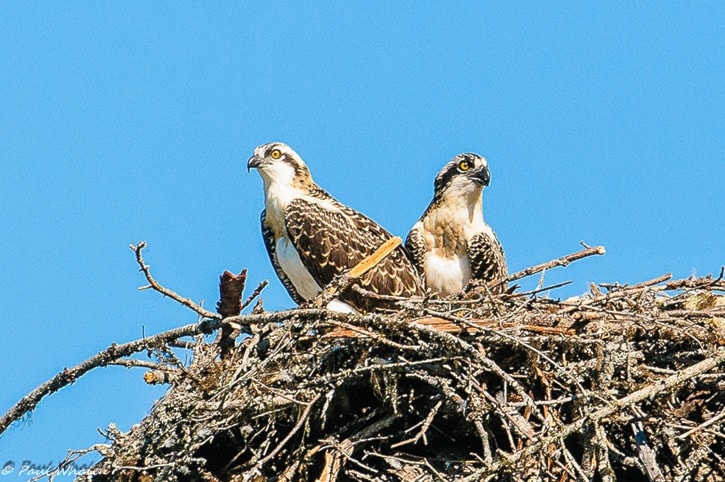For the last 19 years I have been systematically monitoring the Osprey nests between Nakusp and Fauquier. There have been a few occasions when I was away during the summer or at least away enough of the time that I was unable to get an accurate picture. But for 12 of the last 19 years I do have sufficient data to determine the outcome of the nests.
Each year I determine several things. First, at how many nests birds are present at the beginning of the season; second, in how many nests eggs are laid; third, in how many nests young are produced and fourth, how many young are produced in all the nests.
Ospreys spend the winter in Central and South America. The usually arrive back in the valley around the middle of April. Early in the season, usually at the beginning of May, I check all of the nests to see at which ones adult birds seem to be present. This ranges from a low of 22 in 2012 to 36 in 2010; the average is 28.
Not all of these nests, however, will actually be used. For reasons which are unclear, there are always a few pairs that go through the motions, perhaps make some repairs to the nest, but do not lay eggs. The number of nests that do contain eggs ranges from a low of 14 in 1998 to a high of 27 in 2010; the average is 20. And even in those nests in which eggs are laid, not all will actually produce young. The number of nests that do produce young ranges from a low of 8 in 2012 and 2013, to a high of 19 in 2010; the average is 14.5. The total number of young produced in all the nests ranges from a low of 12 in 2013 to 31 in 2011; the average is 23.3.
It is interesting to note that in years when fewer nests are successful, the average number of young in each nest seems to increase. Perhaps fewer nests results in less competition for food and therefore better nesting success.
It is clear from my statistics that 2012 and 2013 have been the worst two years of the twelve for which I have data, this coming right after 2011 which was one of the best. In 2011, 17 of the 20 active nests (85 per cent) produced young.
Last year only 50 per cent of the active nests produced young, and this year that dropped to 40 per cent – the average is 72 per cent. The total number of young produced in these three years was 31, 13 and 12 respectively – the average is 23.
It is difficult to explain why 2011, 2012 and 2013 should produce such different results. In 2012, water levels were extremely high during June and July, and I had wondered if this may have been a factor. But levels were not unusually high this year yet results were again poor. It’s probably too early to push the panic button just yet, but I’ll be anxious to see what sort of results we get in the next couple of years.
